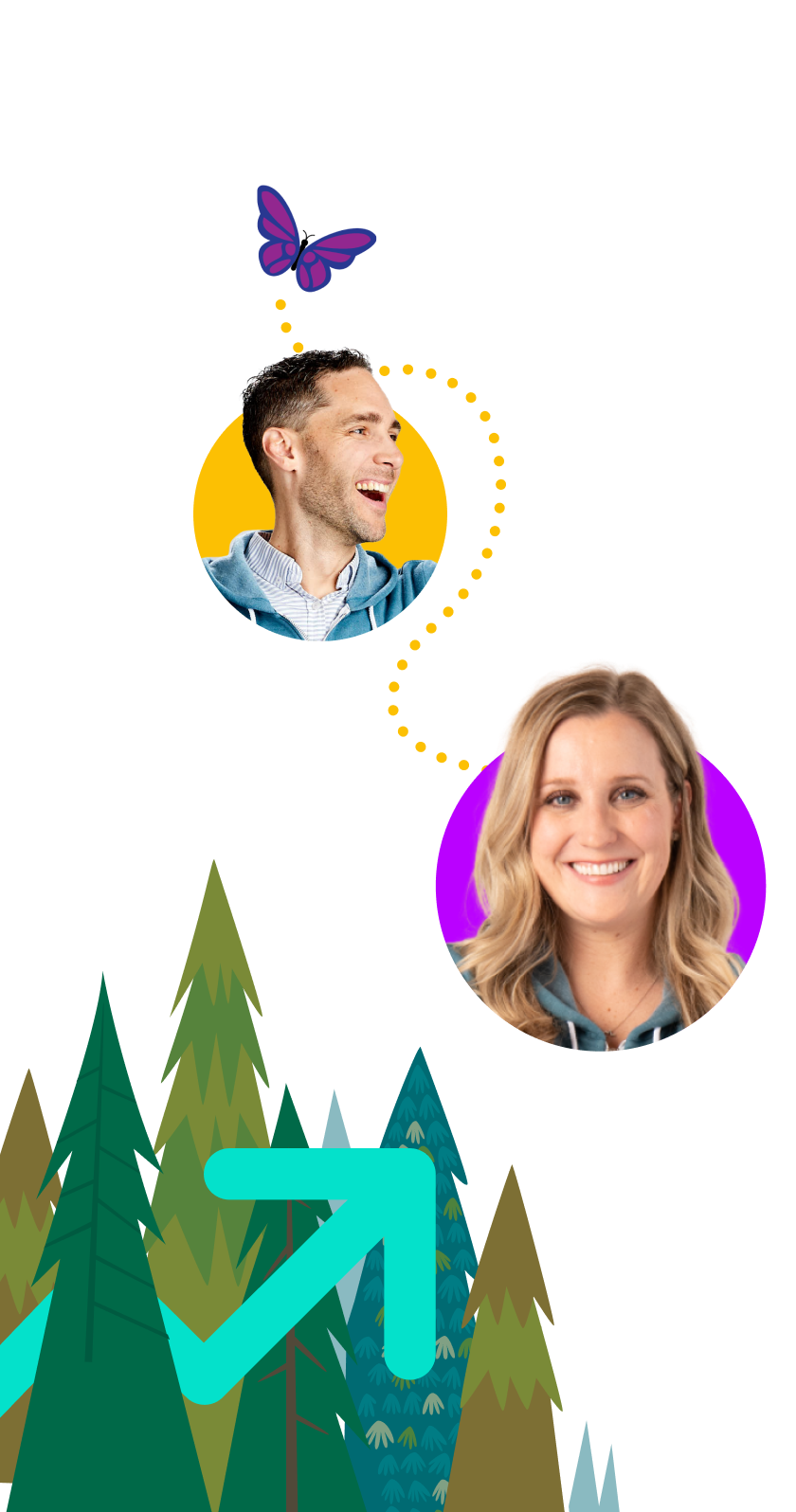“A-B-C. A-Always, B-Be, C-Closing. Always be closing, always be closing.”
This quote has become synonymous with an outdated way of thinking about sales. It spoke to a time when salespeople were pushed to close deals by any means necessary.
That aggressive mentality is giving way to a more thoughtful approach — one that values curiosity over hard sells. As someone who’s witnessed the changing tides of sales tactics, I believe that “Always Be Curious” is a better A-B-C sales tactic — and a secret to sales success. Here’s a deep dive into how adopting a curious mindset can transform your sales approach and why it’s essential in today’s buyer-driven market.
What you’ll learn:
What trends drive sales productivity today?
Get the State of Sales Report to discover productivity insights from 7,700 sales professionals.


Is “Always Be Closing” an effective sales strategy?
Sales used to be all about closing the deal, even if it meant sacrificing customer relationships and satisfaction. But now, customers are more informed and connected than ever before. In fact, 87% of business buyers expect sales reps to act as trusted advisors, according to the latest Salesforce State of Sales report.
Sales reps need to change their approach to focus on building relationships and delivering value to their customers.
In my experience, “Always Be Closing” is an ineffective strategy. Today’s customers don’t just want a hard sell. They just want to be heard and understood. They want solutions to their problems. That’s why sales strategies need to be nimble and adaptable, building genuine relationships and taking the time to understand customer needs before pushing for a quick sale.
Other sales strategies to consider
While “Always Be Closing” has traditionally focused on pushing for a sale at every interaction, modern sales strategies suggest a different approach. Encouraging ongoing curiosity about customer needs builds relationships. Here are three techniques that not only provide a better fit for today’s sales environments but align with an “Always Be Curious’” mindset:
1. Solution selling
Solution selling focuses on understanding the specific challenges customers face. Sellers take the time to dig deep and really listen to what customers are saying, so they can speak to tailored solutions. This builds trust and fosters lasting business relationships. And it also moves away from the quick deal-closure mindset typical of “Always Be Closing.”
When to use: Solution selling is a great approach when customers have specific, complex problems. For example, if a retail store is experiencing high employee turnover, take the time to understand their work environment and employee concerns. You could then propose specific solutions depending on what you offer to address their pain points.
2. Value-based selling
Here, the goal is to clearly demonstrate how a product or service can add real value to the customer’s life or business. Salespeople use their understanding of the customer’s priorities to highlight the benefits and potential returns of their offerings. This approach prioritizes customer satisfaction over the urgency of closing a sale, focusing on long-term success rather than short-term gains.
When to use: When you can clearly show the benefits and ROI of your product, use value-based selling. For example, if you’re selling a CRM system to a small business, explain how it can help them increase their sales efficiency by 30% and improve customer retention. Focus on features that align with their growth goals.
3. Inbound selling
This technique involves creating content that answers potential customers’ questions and solves their problems before they even speak to a salesperson. This method is less about pushing a product and more about pulling customers in by offering them the information they need when they need it. By addressing the issues that matter most to their target audience, companies avoid ever having to say, “The leads are weak.” Those who engage with your content are already interested and informed about how your solution can help them.
When to use: Use inbound selling to attract and engage customers who are already seeking solutions. For example, a software company could publish blog posts and case studies on data security to attract potential customers who are actively looking for ways to protect their data. This ensures leads are more aligned with your product and more likely to convert.

Thanks, you’re subscribed!

From “Always Be Closing” to “Always Be Curious”
“Always Be Closing” pushes you to seal a deal, no matter what (even if it is a poor fit). In contrast, “Always Be Curious” requires patience to take the time and effort to ask probing questions and guide a deal. And curiosity pays off more often than brashness.
In my experience, shifting from “Always Be Closing” to “Always Be Curious” isn’t just a change in mindset. It’s a strategic move that transforms how deals are won. Here are some sales-closing techniques that have proven effective by fostering curiosity and understanding:
- Build trust as a foundation: Sellers cultivate genuine relationships and trust. Approach each interaction with the goal of demonstrating that you are a trusted advisor, not just a salesperson looking to close a deal.
- Deep-dive into customer needs: Embrace an “Always Be Curious” mindset by deeply understanding your prospect’s business. This involves asking the right questions and actively listening to their responses. Validate your understanding by summarizing their pain points and needs back to them, showing you truly grasp their situation.
- Practice active listening: Active listening is more than hearing words. It’s about understanding the context and the emotions behind them. This can lead to deeper insights into the customer’s real challenges, enabling you to propose better-targeted solutions.
- Validate pain points and offer solutions: Once you’ve identified and validated the customer’s pain points, tailor your discussions around how your product or service uniquely addresses these issues. This focus shifts the conversation from a generic sales pitch to a personalized consultation.
- Capitalize on the moment of agreement: When a customer acknowledges a problem or expresses a desire that your product can satisfy, that’s your cue to guide them toward a decision. Use these moments to confirm their need for a solution and gently steer the conversation toward closing.
- Use curiosity throughout the sales process: Continuous curiosity keeps the dialogue open and dynamic, allowing for ongoing adjustments based on the customer’s feedback and evolving needs.
Join the Salesblazer movement
We’re building the largest and most successful community of sales professionals, so you can learn, connect, and grow.

How a CRM can help you close sales
Customer relationship management (CRM) sales software is a valuable tool for sales professionals who want to adopt a more effective “Always Be Curious” approach to selling. It can help them gain a deeper understanding of customer needs and develop more effective sales strategies. Here are some ways a CRM can help you close more deals:
- Deeper customer insights: A CRM doesn’t just manage contacts. It’s a powerful tool to help keep track of customer data and interactions. By using this data, salespeople can understand not just what their customers buy but why they buy it. This aligns perfectly with my philosophy of deeply understanding your prospects to tailor your solutions effectively. Modern CRMs provide analytics that can predict customer behaviors and preferences, allowing sales teams to anticipate needs and personalize their sales pitches more effectively.
- Automated follow-ups tailored to customer needs: Timing can be everything in sales. A CRM helps you automate follow-ups based on customer interactions, ensuring you reach out with the right message at the right time. This proactive approach, based on customer behavior and previous engagements, makes follow-ups more impactful and less intrusive.
- Consistency across customer touchpoints: Inconsistency can kill deals. A CRM ensures every member of your team has access to the same information, facilitating a consistent and informed approach across all customer interactions. This consistency helps build trust. This is critical in a sales process where customers are looking for reliable partners.
- Collaborative selling for complex deals: Today’s sales often involve multiple stakeholders. A CRM supports collaborative selling by allowing teams to share insights and status updates effortlessly. This unified approach is crucial when dealing with complex sales scenarios, ensuring everyone is aligned and moving toward a common goal.
Start embracing curiosity
Today, success in sales is about building relationships and understanding customers, not just closing deals. You can build lasting partnerships that benefit sellers and buyers by prioritizing curiosity and customer-centric approaches. Embrace this shift, and let your curiosity lead the way to deeper connections and more successful closes.
Want to take the #1 CRM for a test drive?
Go on our Guided Tour to see how Sales Cloud boosts productivity at every stage of the sales cycle.







